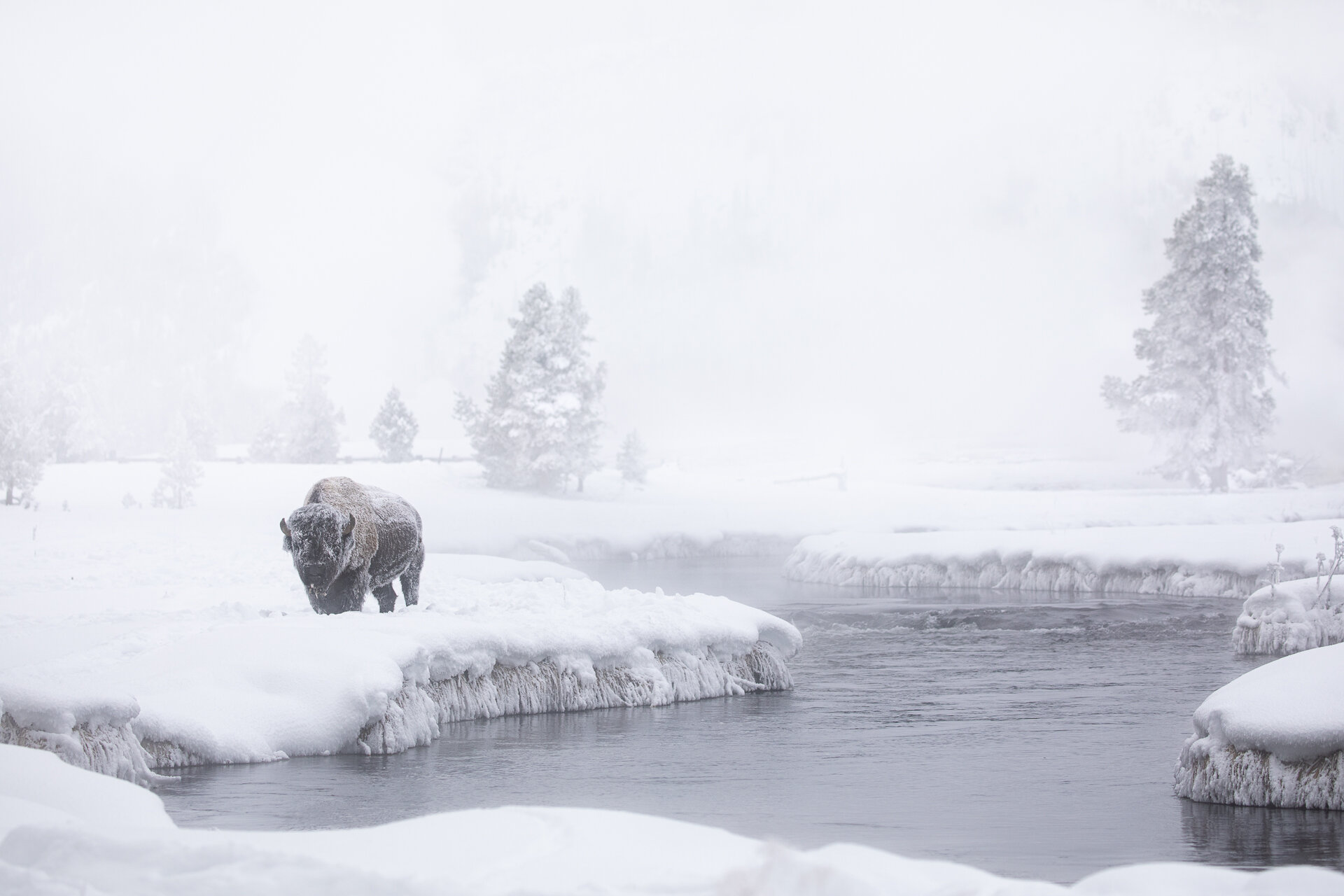A lone bison grazes along the Firehole in Yellowstone National Park.
Bull Bison in Grand Teton
This may be my favorite thing to see in the winter...a big bull bison covered in frost. The winter coat of a bison is so well insulating that there isn’t enough heat escaping their body to melt the frost. I’ve been able to photograph this bull several times over the last couple years. His exceptionally red coat, and the red patch on his face, make him easily recognizable.
Bison - Winter Warriors
As winter settles and temperatures reach -40 degrees, perhaps no animal is as well prepared to survive in this unforgiving climate.
The distinct shoulder hump on their back, which is actually a protruding muscle, allows them to function as a 1 ton, living snow plow. Unlike other ungulates, such as moose and elk, which scrape with their front feet to access food under the snow, bison use this muscle to rock their massive heads back and forth exposing grass and sedge buried under several feet of snow. Some bison will opt out on this “snow-plow” technique, preferring to graze alongside thermal features where the warm steam from geysers or hot springs melts the snow on the surrounding grass.
When violent winter storms hit, prompting other wildlife to seek shelter from the chilling wind and blinding snow, bison just plop down where they are and wait it out. Their winter coats are so thick and well insulated that the falling snow doesn’t even melt on their back. In a heavy snow, you can watch the largest land animal North America vanish before your eyes in a matter of moments.
Tatanka
Winter Wildlife Feature I - Bison
Featured first on this series of posts highlighting wildlife and their unique strategies for enduring Yellowstone winter is the bison. Two key assets equip bison to survive in this unforgiving climate.
The distinct shoulder hump on their back, which is actually a protruding muscle, allows them to function as a 1 ton, living snow plow. Unlike other ungulates, such as moose and elk, which scrape with their front feet to access food under the snow, bison use this muscle to rock their massive heads back and forth exposing grass and sedge buried under several feet of snow. Some bison will opt out on this “snow-plow” technique, preferring to graze alongside thermal features where the warm steam from geysers or hot springs melts the snow on the surrounding grass.
When violent winter storms hit, prompting other wildlife to seek shelter from the chilling wind and blinding snow, bison just plop down where they are and wait it out. Their winter coats are so thick and well insulated that the falling snow doesn’t even melt on their back. In a heavy snow, you can watch the largest land animal North America vanish before your eyes in a matter of moments.
Rutting Bison
With population estimates at one point as high as 50 million, it is hard to believe that in 1902 there were only a couple dozen bison left in the lower 48. If those few survivors were not protected from poaching in Yellowstone, this iconic species would be missing from the Greater Yellowstone landscape.
I caught this large bull, weighing close to 2000 lbs, as he wallowed in the dirt and marked it with his scent. As he shook the dirt off his back the area surrounding him faded into a cloud of dust.








